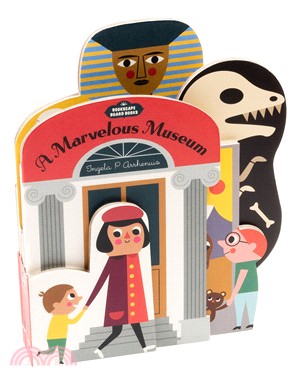商品簡介
Beryl Cook began to paint during the 1960s and became a local phenomenon in Cornwall, England where she lived with her family, but it wasn't until 1975 that she first exhibited her work. Her appeal was classless and she rapidly became Britain's most popular artist. She was a 'heart and soul' painter, compelled to paint with a passion. Her work became instantly recognisable and was soon a part of our artistic vernacular. A modern-day Hogarth, Beryl Cook was a social observer, albeit with a more sympathetic view of humanity. The warm, original style of her paintings encapsulates joy. She possessed that rare gift - the power to uplift. Now the work of Beryl Cook can be seen again, both by her loyal fans and a new generation, in this vibrant and fun product range from Kinkajou.
作者簡介
BERYL COOK (O.B.E. 1926 - 2008) was born in 1926 in Surrey, England, one of four sisters. She left school at fourteen, showing little talent for painting and worked in a variety of jobs. Moving to London in 1943 Beryl became a showgirl in a touring production of 'The Gypsy Princess'. She also worked in the fashion industry, which inspired her life-long interest in the way people dress and how they look. In 1946 Beryl married her childhood friend John, who was in the Merchant Navy. Their son John was born in 1950, and the following year they left to live in Southern Rhodesia. This move was to prove a turning point for Beryl. One day she picked up some paints belonging to her son and started a picture. She enjoyed it so much she could not stop. She painted on any surface she could find, scraps of wood, fire screens and most notably a breadboard, as can be seen from her famous early painting of Bowling Ladies. In 1963 the Cooks returned to England to live in Cornwall where Beryl began to paint in earnest. They moved to Plymouth, where in the summer months they ran a busy theatrical boarding house. Beryl loved Plymouth, a thriving, lively seaside town full of pubs, fishermen and sailors and she and John enjoyed going to their local bars and watching flamboyant drag acts. Beryl would concentrate on painting in the winter months, recreating her personal views of Plymouth in vivid oils on wooden panels. Eventually an antique dealer friend persuaded her to let him try and sell a few. To her surprise he sold them very quickly. Bernard Samuels of the Plymouth Art Centre became aware of this 'local phenomenon' and in 1975 he finally convinced her to have an exhibition. It was, of course an enormous success. The show received a great deal of publicity, which resulted in a cover and feature in the Sunday Times Magazine followed by a swift phone call from London's Portal Gallery. The following year, Beryl Cook had her first London exhibition. It was a sell out and the start of an exceptional relationship with Portal, where she exhibited continuously for 32 years From the beginning Beryl's work had a remarkable effect on the British, who immediately took her to their hearts. Her appeal was classless and she rapidly became Britain's most popular artist. She was a 'heart and soul' painter, compelled to paint with a passion. Her paintings encapsulate joy; her style totally original, warm and so instantly recognisable that her work became part of our artistic vernacular. She possessed that rare gift - the power to uplift. Beryl travelled considerably, gleaning new material for her work, often discreetly sketching on small cards inside her handbag to be hidden from view. Based in her beloved Plymouth, she recorded local life with as much relish as that in Buenos Aries, New York, Cuba, Paris and Barcelona. Though a late starter, Beryl completed over 500 paintings in her relatively short painting career. Beryl Cook's work is particularly interesting when viewed in the context of the tradition of British social realist painting and she could easily be described as a contemporary Hogarth or Gilray, although she had a more sympathetic view of the human race. She was, like them, above all a social observer.
























